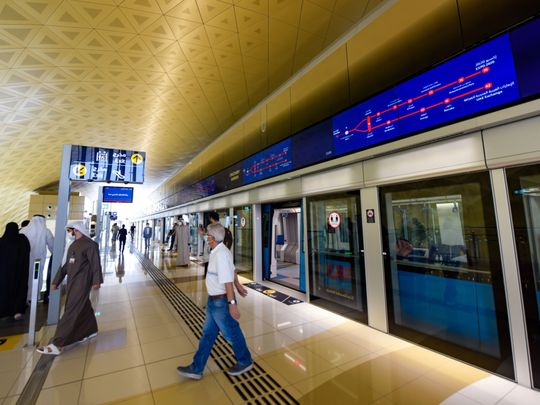Watch: New Dubai Metro Route 2020 – all you need to know

Image Credit: Virendra Saklani/Gulf News
Dubai: Al Furjan resident James Christopher Arriola and his girlfriend, Kristine Argente, were among the first Dubai residents who hopped into one of the trains of the newly-opened Route 2020 on the first day of the new year. The ride was smooth and comfortable, they said.
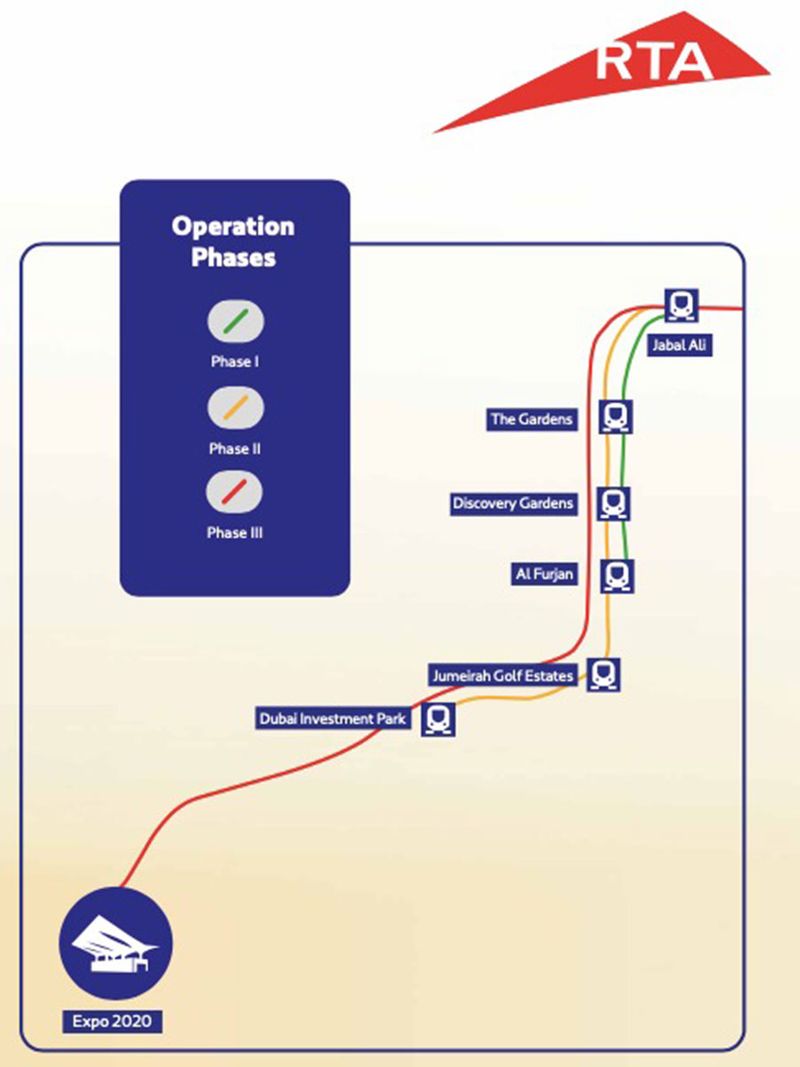
Image Credit: Supplied
On Friday at 10am, the first journey on Route 2020 of the Dubai Metro started from Jebel Ali Station to Al Furjan Station. Four of the seven stations of Route 2020 opened on January 1. The remaining three will commence operations before the opening of Dubai Expo 2020.
The Dubai Metro extension on the Red Line is not only dedicated to the Expo 2020 site but the mass transit network is also built to serve around 270,000 residents living in the fast-growing communities along the route.

Image Credit: Supplied
Arriola and Argente said the journey from Jebel Ali Interchange Station to Al Furjan took around six minutes. Like many residents in the area, they welcomed the opening of Route 2020 as a great New Year’s gift as they now have a better and more accessible public transport. Dubai Metro is the backbone of public transport in the city and Route 2020 is the showcase of the future of mass transit.
Inspired by nature
Before the opening of Route 2020, the Roads and Transport Authority (RTA) gave the media a tour of the stations, including the iconic Expo 2020 station. Each station has a distinct interior design taking the elements of nature, including earth, air fire and water.
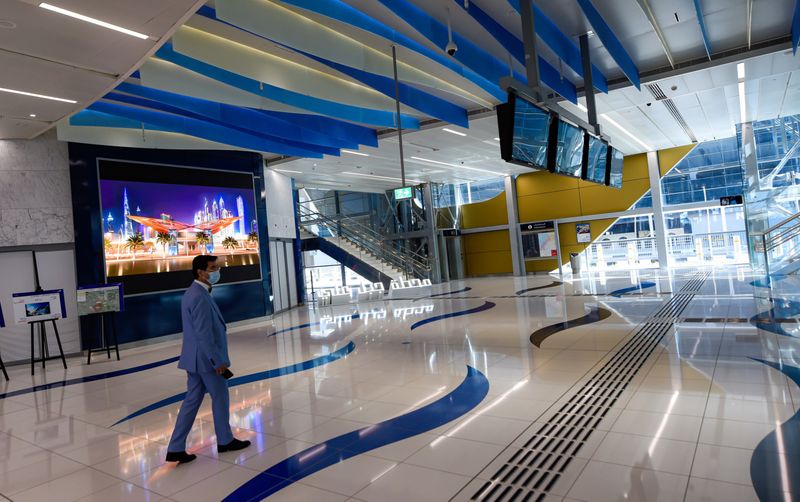
Image Credit: Virendra Saklani/Gulf News
Jebel Ali, which is the interchange station, has water for its theme. It covers an area of 8,800 square metres with a capacity of 320,000 riders per day. The Gardens has an air-inspired theme for its 8,100 sqm elevated station that can accommodate up to 125,000 riders per day. Discovery Gardens, another elevated station, is Earth-inspired. It is spread over 8,600 sqm while Al Furjan’s area is 8,600 sqm and its theme is water. Both Discovery Gardens and Al Furjan stations can hold 125,000 riders per day.
The soon-to-open Jumeirah Golf Estates, an underground station, is touted as the biggest metro station at 28,700 square metres — its designed being inspired by the element of fire. Another underground station is air-inspired Dubai Investment Park. Both stations can accommodate up to 250,000 riders daily.
Iconic station
The most iconic station is Expo 2020. Its theme is ‘Future’ — with every inch of its 18,800 sqm area representing Dubai’s vision of the future.
The Expo 2020 station, which boasts a unique design featuring the wings of an aircraft, signifying Dubai’s future drive towards greater innovation, spans an area of 18,800 square metres, with a total capacity of 522,000 riders per day in both directions at a rate of 29,000 riders per hour in both directions, according to Abdul Mohsin Ibrahim Younes, CEO of the Rail Agency at RTA.
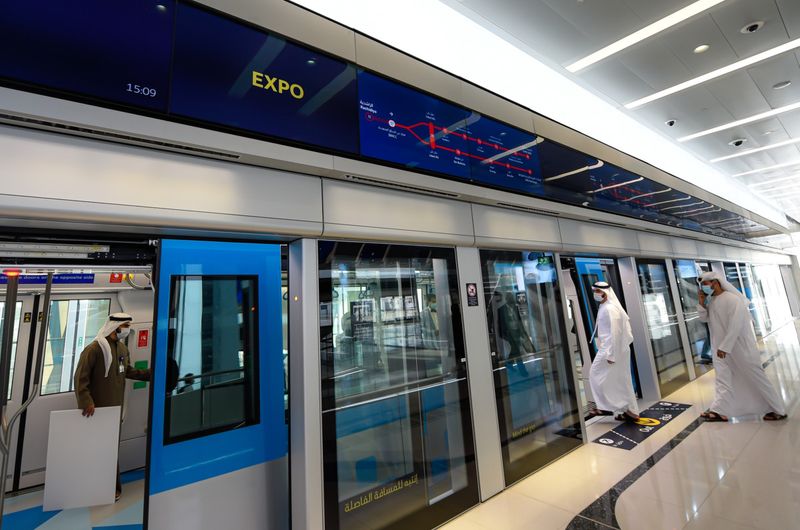
Image Credit: Virendra Saklani/Gulf News
He said the station can accommodate the large volume of commuters expected at 35,000 riders on weekdays and 47,000 on weekends or around 47,000 or 29 per cent of Expo visitors daily.
The station has three passenger platforms and three routes. It is linked on the eastern side with the Expo exhibition and Expo COEX, and on the western side with the EXPO Mall and urban complex. The station design enables its integration with public transport means with spaces for buses, taxis stands, bicycles and other mobility system people use.
Station icon
Unmissable is the memorial of Expo 2020 station — an artwork inspired by the noble connotation of the phrase “I believe in God” that was lifted from the poem “The Beginning of the Fifty” by His Highness Sheikh Mohammed bin Rashid Al Maktoum, Vice-President and Prime Minister of the UAE and Ruler of Dubai.
Project completion timeline
* 29 June 2016 — Sheikh Hamdan Bin Mohammed Bin Rashid Al Maktoum, Crown Prince of Dubai and Chairman of the Dubai Executive Council, lays the cornerstone of the Route 2020 Project.
* 24 October 2017 — RTA starts working on Route 2020 Tunnel.
* 8 November 2018 — Overhead bridge work is completed.
* 10 November 2018 — The first train arrives
* 30 October 2019 — The arrival of the last train
* 14 March 2020 — The end of construction work and start of operational trials.
* 7 June 2020 — The opening of Route 2020
* 1 January 2021 — The first journey on Route 2020 of Dubai Metro starts from Jebel Ali Station to Al Furjan Station at 10am
The RTA explained, “the poem encapsulates the faith in God. It also talks about wisdom and foresight as well as motivates the youth to make achievements and raise the standing of the homeland.”
“The memorial was designed by international artist El Seed, and is decorated in blue to match the predominant colour of the station. The monument measures 1.5×3.5 metres and is placed on a 1×4 metres base. It depicts a harmonious scene characterised by flexibility and firmness. It describes the synergy between details of the past and decisions of the future. The blue colour entwines with the predominant colour in the station. It is dominant colour in nature that symbolises stability, loyalty, trust, intelligence and peace,” the RTA added.
Bigger capacity and smart gates
Younes also noted the new trains for Route 2020 have bigger capacity. “Each new train can accommodate up to 699 passengers, as compared to 643 passengers for trains on the Red Line,” he said.
Route 2020 facts and figures
* Dh10.6 billion is the project cost
* 15km span of Route 2020 (11.8km of elevated track and 3.2km underground track)
* 7 stations, include 1 interchange station with the Red Line, 1 Iconic Station at Expo site, 3 elevated stations and 2 underground stations
* Route 2020 is one of Dubai’s first project ‘Towards the Next 50 Years’
* 270,000 residents living along Route 2020
* The total area of elevated stations ranges from 8,100 to 8,800 square metres, and the area of the two underground stations ranges from 27,000 to 28,700 square metres
* The iconic station at Expo site spans 18,800 square metres and has a capacity of 522,000 riders per day
The last cabin of the train is reserved for women and children and part of the first cabin is allotted as Gold Class while the rest are Silver Class. Seats are in a transversal style in the Gold Class and longitudinal pattern in both the Silver Class and Women & Children cabin.
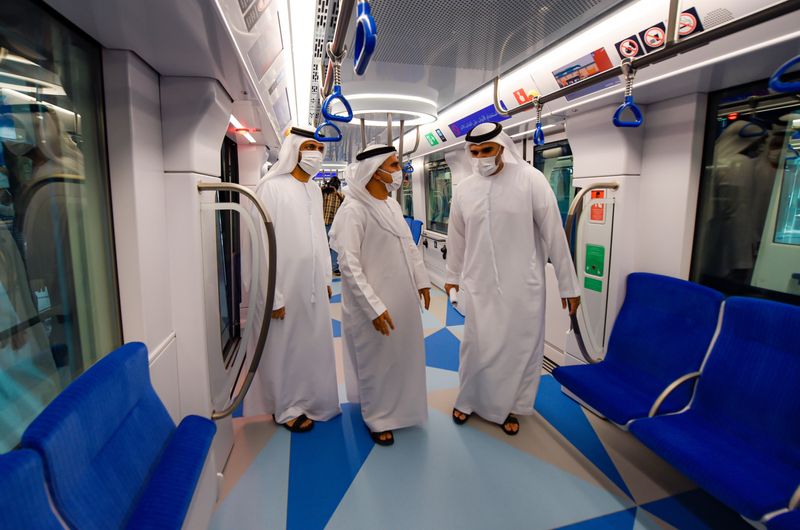
Image Credit: Virendra Saklani/Gulf News
Hasan Al-Mutawa, Director of Rail Operations at RTA, meanwhile said all seven stations of Route 2020 have smart fare gates. “Unlike traditional barriers that only have sensors to open and close at fixed intervals, the smart gates at Route 2020 have 3D cameras as an added safety feature. These 3D cameras mounted on top scan the passengers from top to bottom and determine if the person would need more time to pass the gate,” Muttawa explained.
He added: “If someone is carrying a stroller, the camera will send a signal to the gate to keep it open for a longer time to let the person pass safely. The smart cameras also have facial recognition and the smart fare gates are fitted with high accuracy scanning of Nol cards and mobile phones. The smart gates also require little space and we were able to put more gates so people can check in and check out swiftly especially during busy hours.”
Gold standard in energy efficiency
Another striking feature of Route 2020, according to RTA, is energy efficiency. Mohammed Al Ameri, Director of Rail Maintenance at RTA, said all stations use HESOP or Harmonic and Energy Saving Optimiser system. The HESOP system works by converting and transferring any unused power — this means the energy not used and generated by a trains while braking can be transferred to next train or to any accelerating trains on the grid.
Timings, link bus routes
Service timings of Route 2020 are synchronised with Metro Red Line. Operations are 5am to 12 midnight from Saturday to Wednesday; 5am to 1am (next day) on Thursday; and 10am to 1am (next day) on Friday.
Two Metro link bus services also opened on January 1. The first is Route F45, which starts from Al Furjan Metro Station and heads to the Discovery Gardens at a 20-minute frequency during peak hours. The second is Route F56, which starts from the Dubai Internet City Station and heads to Al Khail Metro Station at a frequency of 15 minutes during peak hours.
Aside from the regenerative electricity, all stations also use energy-efficient LED lighting systems. All energy is optimised and an expected 6.6 million KW of electricity will be saved annually. Al Furjan is the first station to get the Gold LEED (Leadership in Energy and Environmental Design) certificate, the internationally recognised green building certification system, and other stations will use their certifications, noted Al Ameri.

